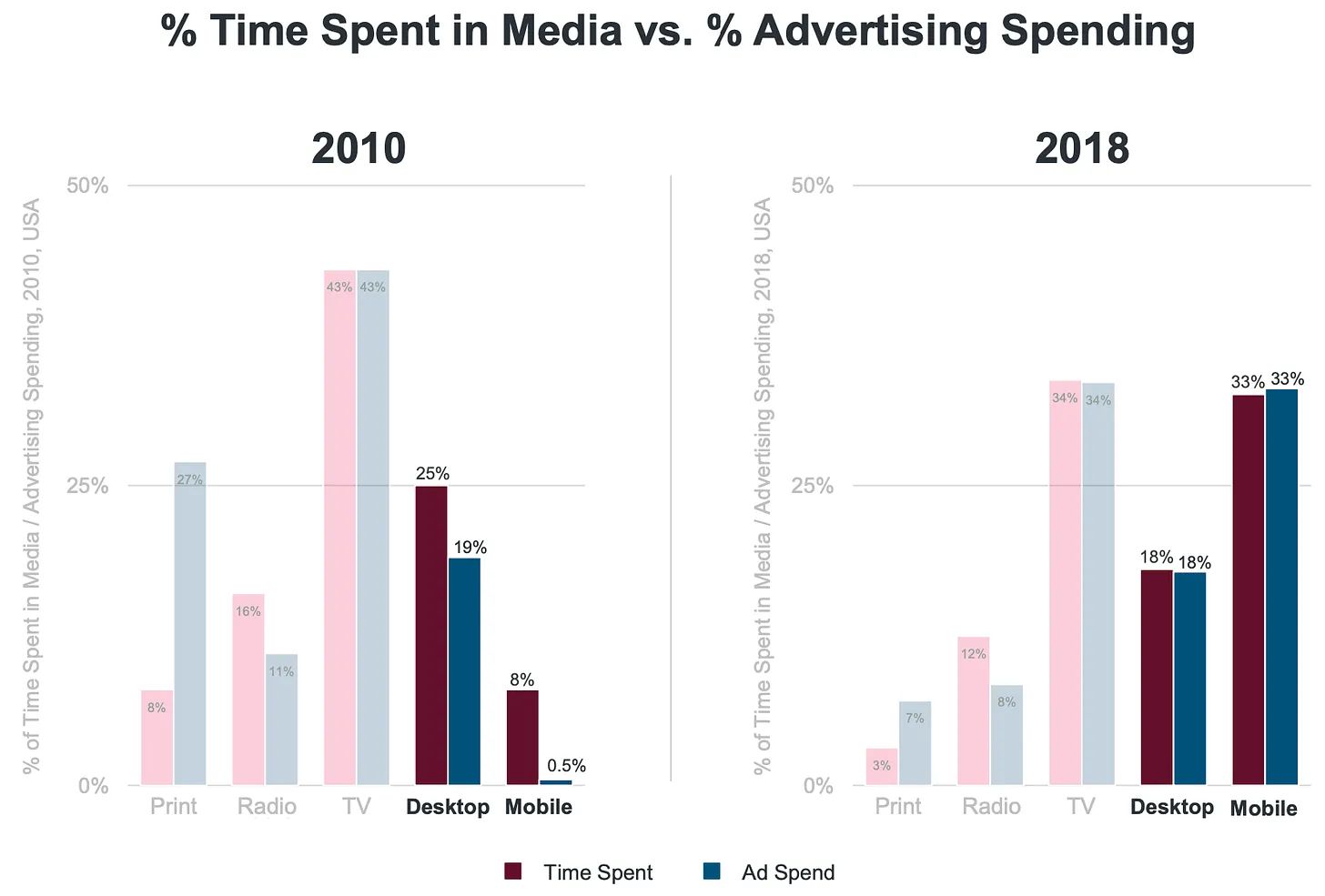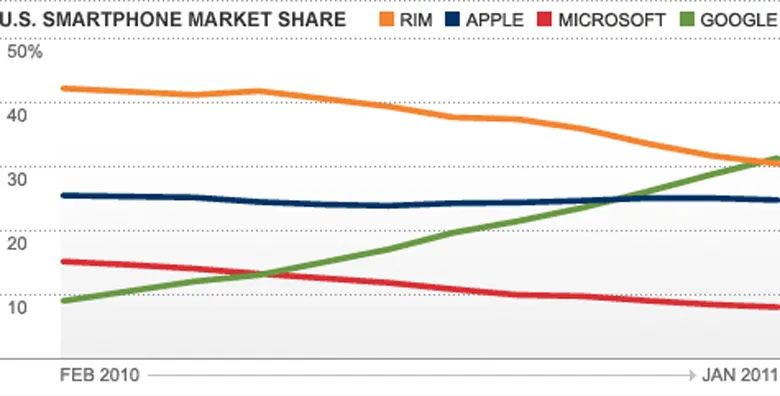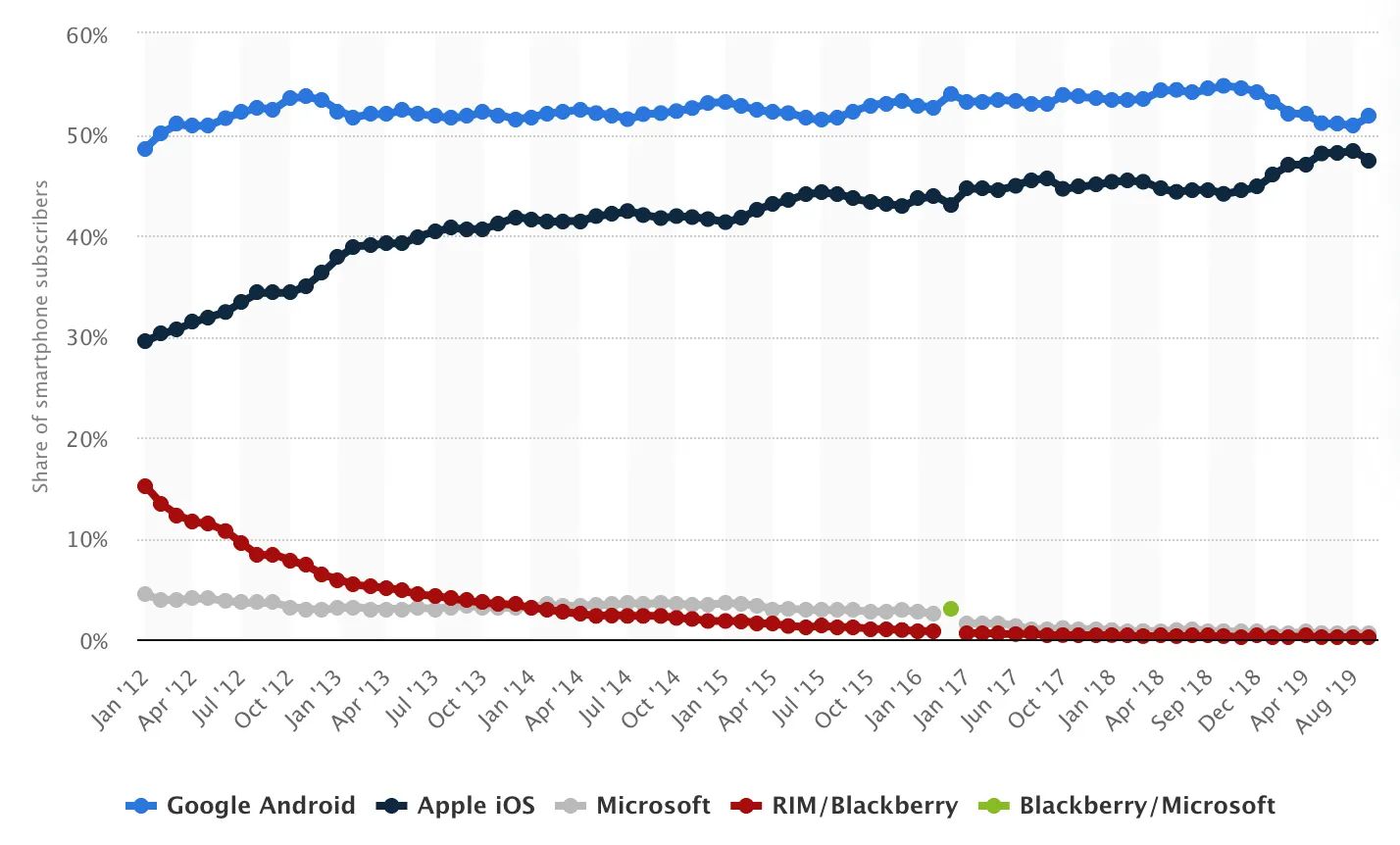The Decade in Culture Tech: Streaming, Binging, Opining
From 2010-2019, the social software innovations of Web 2.0 gave way to an era defined by smartphones, social media and streaming. Life is good for consumers, but what about creators?

At the start of 2010 I was running ReadWriteWeb, a tech blog that helped define and chronicle the Web 2.0 era. We had run our first conference the previous year, in Mountain View in the heart of Silicon Valley. The site was growing in leaps and bounds, the online advertising revenue was flowing in, and I’d just hired a new COO in December 2009. It was peak Web 2.0…at least it feels that way to me now, with the benefit of hindsight.
That’s because things have changed considerably over the past decade, 2010-2019. The largely desktop-based “social software” innovations of Web 2.0 gave way to an era defined by smartphones, social media, and streaming entertainment. That made culture much more mobile and inclusive, since nearly everyone could afford a smartphone and had the ability to both ‘read’ and ‘write’ things on the internet.
However, this past decade has been noticeably darker in tone too, like the 1970s following the 1960s. In retrospect, Web 2.0 had an overly optimistic “the Web is made of people” ethos. Those of us who wrote and reported on Web 2.0 should’ve considered the potential downsides more, because from 2010 onwards the internet became increasingly dominated by four massive corporations: Facebook, Apple, Amazon, and Google (sometimes labelled FAANG, if you add in Netflix). We, the people, were soon under the control of Big Tech algorithms. They got us all addicted to feeds and filter bubbles.
With that in mind, here are what I’ve identified as the major culture-tech trends of the past decade…
Firstly, streaming is now the defining distribution method for the entertainment industries. At the beginning of 2010, it was a nascent technology – largely because broadband and 3G speeds still weren’t optimal. Netflix first introduced streaming in 2007, but it wasn’t until the company began creating its own tv shows in 2013 (starting with ‘House of Cards’) that streaming really took off. Not coincidentally, at the same time “binging” a tv series became de rigueur. As for music, Spotify hadn’t even launched in the US at the start of this decade (it did so in July 2011).
By the end of the decade, Netflix led the pack in tv and movie streaming – although other corporations, like Disney and Apple, are catching up fast. In music, Spotify is the current dominant player and its app is how many of us now consume music. Amazon, Apple and Google are all powerful players in entertainment streaming, while Facebook is increasingly competing with Google’s YouTube on social video streaming.
If streaming is the defining distribution method of this past decade, then the smartphone is the defining hardware. This slide from Mary Meeker’s 2019 Internet Trends report shows just how much mobile came to dominate both consumption and revenue over the decade:

Two companies now control the mobile operating system market: Google and Apple. At the beginning of 2010, Google’s Android mobile operating system was fourth in the US market (behind RIM, Apple and Microsoft). By January 2011, Android had already become the most-used mobile OS in the United States, overtaking a steeply declining RIM.

Today, Android and Apple’s iOS together own 99% of the US market. RIM’s Blackberry is like an ancient relic.

Because mobile rules, apps are where the internet mostly happens now. Back in 2010, when desktop computers still ruled, the Web browser was king. At that time, Microsoft’s Internet Explorer still held over half the market share for browsers (Google’s Chrome became market leader in mid-2012, and hasn’t relinquished that lead since). But think about how you now watch tv, listen to music, read the news, even read a book. Netflix, Spotify, Facebook, the NY Times, Kindle on your iPhone or Android device…they’re all apps.
Social media took over the media landscape, gobbling up audience, attention and revenue. Facebook grew from just over 600 million in 2010 to about 2.5 billion now. Twitter grew from 30 million users at the start of 2010 to 330m in 2019. The New York Times first introduced a “metered paywall” in 2011, in hindsight a savvy move that would eventually save it from the trail of destruction social media wrought in the media industry.
Social media has also perverted the read/write web over the past decade, with toxic opinions and groupthink having replaced the (admittedly naive) notions of community and collaboration that defined Web 2.0. I believe this has had an impact on the cultural industries too, with ideology now seemingly more important than aesthetics in tv, movies, music and books.
The other major trend of the past decade worth noting is the rise of interactive media; mainly gaming (e.g. Minecraft and Fortnite), Virtual Reality and Augmented Reality. AR game Pokémon Go was launched in July 2016 and became a worldwide cultural phenomenon that year. Meanwhile, the first commercial release of the Oculus Rift was in 2016, a couple of years after Facebook acquired it. Fortnite became popular with its “Battle Royale” mode, which was released in September 2017.
It’s fair to say that neither VR nor AR grew as much as first thought, when these technologies started to gain traction mid-decade. That’s largely because the hardware still isn’t quite right. VR headsets are too awkward and smartphone-based VR was a dud, and with AR one senses it will require future innovations in ‘smart glasses’ to really take off. Perhaps the 2020s will be the decade of “mixed reality,” just as streaming defined the decade about to finish.
Conclusion
Despite the dominance of Big Tech and the damage that social media has inflicted on the read/write web over the past decade, from a cultural consumption perspective we’ve got it very good at the end of 2019. We can listen to nearly any album we want on the likes of Spotify and Google Play, binge-watch a range of compelling 2010s-era TV on Netflix and similar services, buy an obscure book on Amazon and have it immediately available on our Kindle, read (and possibly subscribe) to the latest news on the NYT or WP or Guardian or BBC apps, listen to an incredible range of podcasts on-demand, play Fortnite with people all over the world, and so on.
All of this we can do while out and about, using our smartphones to stream on fast 4G (soon to be 5G) mobile networks.
This past decade will ultimately be looked upon as a golden era in cultural content on the internet…with the major caveat that business models for creators are far from ideal. Streaming revenues aren’t even close to matching past CD sales (or even download sales) for musicians. All but the very elite authors have been squeezed out of mainstream culture; and most won’t make a living from books. Media has had it worst of all during the 2010s, with the online advertising industry decimated by Google and Facebook.
So I’ll look back on the 2010s as being a boon for cultural content, but a bust for many creators in terms of revenue. Let’s hope we see innovation on business models over the next decade.
As for the content itself, I expect it to become much more interactive and immersive in the coming decade. The cultural content of the 2020s will be more often ‘experienced’ than ‘read’ (or watched, listened to, etc). Whether that’ll be a good thing or a bad thing…well, check back with me in December 2029!
Buy the Book
My Web 2.0 memoir, Bubble Blog: From Outsider to Insider in Silicon Valley's Web 2.0 Revolution, is now available to purchase:
- Paperback, US$19.99: Amazon; Bookshop.org
- eBook, US$9.99: Amazon Kindle Store; Apple Books; Google Play
Or search for "Bubble Blog MacManus" on your local online bookstore.